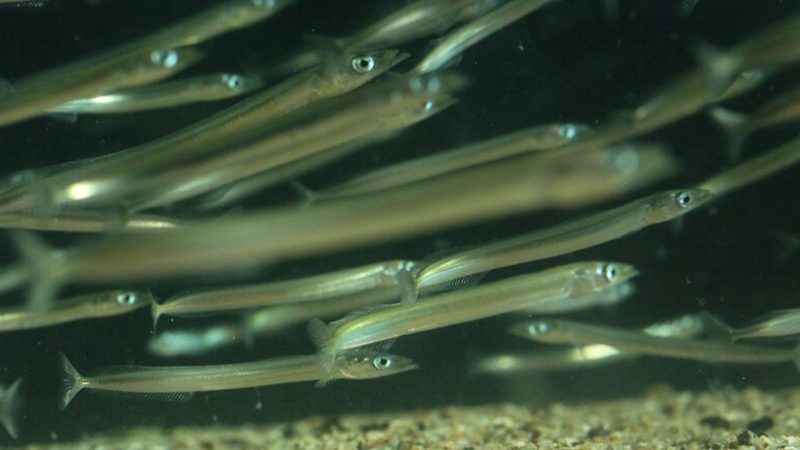Look up stories about climate change on Google and you will find they are illustrated with pictures of flaring gas from rigs or steam from coal-fired power stations – or
even wide-bodied jet aircraft lumbering into the sky. What you will not see are trawlers.
Yet belatedly we’re realising that it is not just fossil fuels or the loss of forests that are warming the planet. Another major factor in the build up of carbon in the atmosphere is dragging heavy nets and trawls across the sea bed or cutting down the undersea forests on the sea floor.
A recent scientific paper in Nature said that the carbon emissions from trawling were likely to be equivalent to the global aviation industry.
Until recently, scientists only counted the carbon in the fuel that fishing vessels burned. They had not looked at what the process of trawling was doing to carbon in
the sediments, which have often been there for thousands of years, and to bottom living organisms which grow on the sea bed.
The ocean floor is the world’s largest carbon storehouse. So if we disturb it we exacerbate climate change – and acidification of the sea. Some of this carbon gets emitted back to the atmosphere – we do not yet know how much. Some of it is dissolved back into seawater, making it harder for the sea to absorb carbon dioxide which it already does in vast quantities.
Until around a decade ago scientists just worried about emissions from felled or burned forests and from soils as they were cultivated. Then scientists begin to start totting up just how much carbon was stored in the ocean – so-called ‘blue carbon’ – and figuring out that there were ways of enhancing the ocean’s capacity to act as a sink for carbon dioxide emissions.
The first things they looked at were mangroves – which are essentially coastal forests, only they are estimated to soak up twice as much carbon every year as a tropical rainforest. Mangroves are being lost globally at a rate of two percent a year, especially in southeast Asia, but they can be regenerated or replanted.
Seagrasses, mostly found in shallower water, are impressive too. Posidonia, the Mediterranean variety, is estimated to absorb 15 times as much carbon as tropical forest per year. Posidonia is also in decline. Salt marshes, which are important for coastal defence, are capable of hoovering up astonishing amounts of carbon – at far higher rates than terrestrial ecosystems.
Stopping the loss of these habitats tops the list of what have come to be called ‘nature-based solutions’ to climate change. But so far there have been relatively few attempts to include blue carbon in countries’ carbon budgets or “nationally determined contributions” under the UN Framework Convention on Climate Change.
The projects there have been chiefly mangrove, seagrass and saltmarsh because those are the ones where the flows of carbon in and out have been quantified.
Yet the potential is huge – ocean-based solutions are capable of taking care of a fifth of the carbon we need to tackle to keep global warming to an average of 1.5 degrees centigrade by 2050.
As Jane Lubchenco, of Oregon State University, now an adviser to President Biden, put it when she co-chaired a high-level panel that said that two years ago: “For far too long, the ocean has been mostly absent from serious policy discussions about reducing carbon emissions.”
Now there is more interest, there is more work to be done. Scientists are looking at the carbon retained by seaweeds, such as the Sussex kelp forest that has just been protected from trawling between Brighton and Worthing. Kelp is a bit of an enigma, though, as nobody can work out where the fronds go when they die back.
And nobody has yet fully quantified the effects of trawling on the sediments at the bottom of the sea – thought to hold twice the carbon held by terrestrial soils. Where are the places that you could save the most carbon by catching fish by other methods or just set aside those places as reserves?
It’s complicated: there are animals and plants growing on the seabed today and stores of carbon from previous ages, like the peat bogs that once grew on the Dogger Bank in the North Sea when it was dry land – raised by Professor Callum Roberts of Exeter University at a recent Blue Marine Foundation conference.
The exciting thing, as the Nature paper authored by Dr Enric Sala and 25 other scientists said, is that there could be a kind of triple win: a win for climate, a win for biodiversity and a win for fish stocks, which could rebound if trawling was removed from large enough areas.
There is so much still to learn but one certainty so far. We’ve begun to talk about trawling in the same breath as smokestack industries like coal – and that awareness is likely to change the world one of these days.
This article was first published in Christopher Ward’s LOUPE 22 magazine, guest-edited by BLUE’s Executive Director, Charles Clover.


















